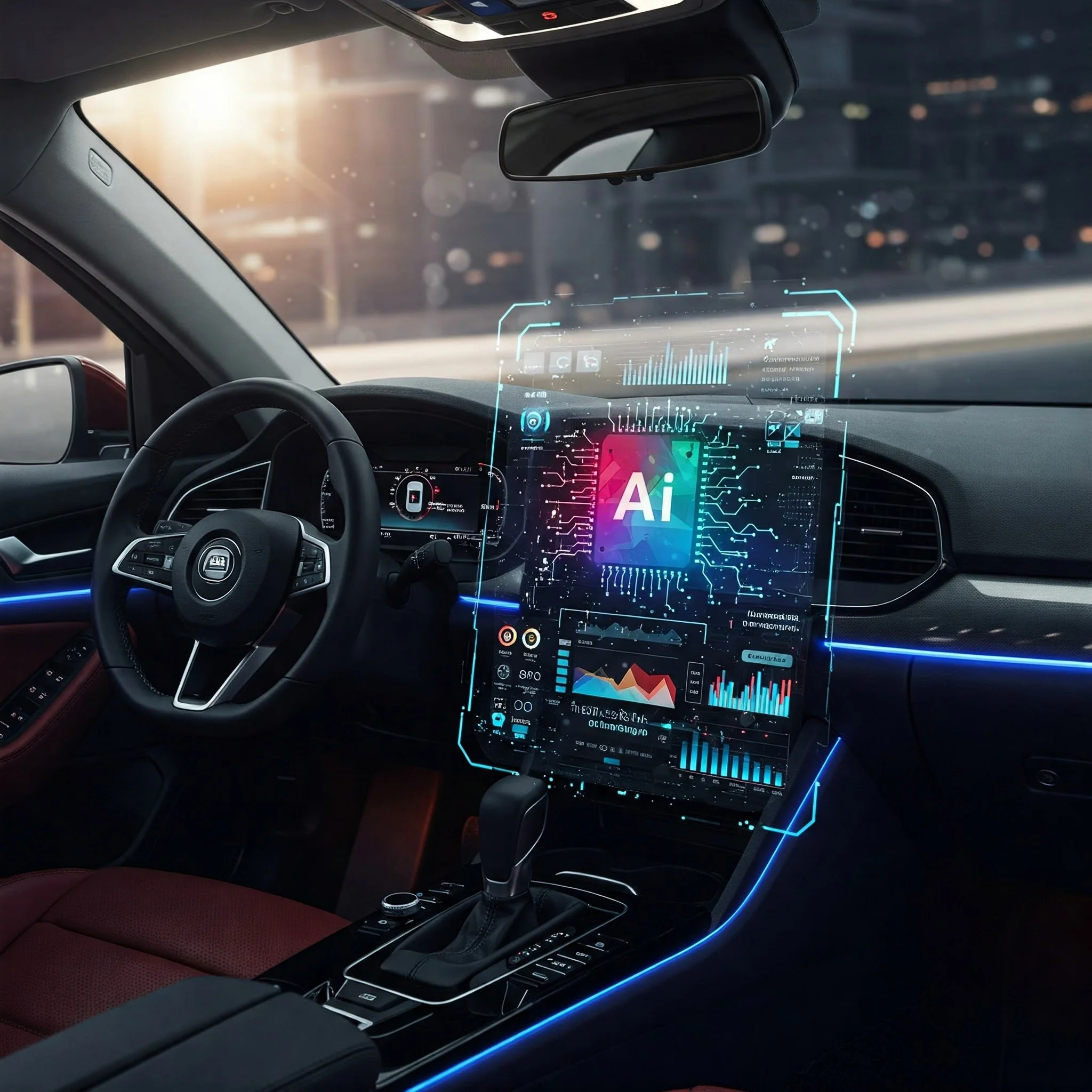From Cruise Control to AI Control: How AI is Steering the Future of Automotive
Remember when "AI in cars" meant KITT from Knight Rider chatting sassily with David Hasselhoff? I probably just dated myself with the reference, but we’re in the future! Artificial Intelligence has gone from sci-fi fantasy to everyday reality, reshaping the automotive industry with new innovations coming out every few months. From enhancing safety and predicting repairs to crafting the perfect route for your road trip playlist, AI is behind the wheel and changing how we drive.
Real-Life Examples of AI in Automotive
Tesla’s Autopilot: The Chauffeur You Didn’t Know You Needed Tesla isn't just famous for sending cars into space. With AI-driven Autopilot, their vehicles can steer, accelerate, brake, and even park themselves. This technology uses sensors, cameras, and sophisticated AI algorithms to analyze real-time road conditions, making your commute feel like a futuristic dream. Learn more here.
BMW’s Intelligent Personal Assistant: Siri, But Make It Bavarian Ever wanted your car to respond when you say, "Hey BMW, I'm cold"? BMW's Intelligent Personal Assistant not only adjusts cabin temperature but also learns your habits, predicts your needs, and even cracks jokes—because everyone needs a laugh in traffic. Check it out.
Waymo’s Self-Driving Cars: Letting Robots Take the Wheel Waymo is paving the road to fully autonomous driving, deploying AI-driven vehicles that navigate complex cityscapes without human intervention. These cars learn from millions of miles driven, continuously improving their skills. Finally, robots get a driver's license. Read the case study.
Ford's AI Predictive Maintenance: Your Car Diagnoses Itself Before It's Sick Ford's AI-enabled predictive maintenance identifies potential car troubles before they become costly headaches. Sensors and data analytics alert drivers to issues early, keeping cars healthier—and your wallet happier. Explore more here.
Mercedes-Benz's MBUX System: Luxury Meets Artificial Intelligence Mercedes-Benz User Experience (MBUX) integrates AI seamlessly, offering drivers personalized infotainment options, navigation, and control over car functions through simple voice commands. It even adapts to your music preferences—no more awkward playlist skips. Discover more.
These AI initiatives are great, but how can someone working in the automotive industry use AI in their everyday job? Whether it's forecasting sales, managing inventory, understanding customers better, or keeping an eye on competitors, here are five powerful AI prompts designed to make your job easier, smarter, and maybe even a bit more fun. Check out the below prompts to get you started on the road to efficiency with AI!
5 Handy AI Prompts for Automotive Professionals
Sales Forecasting: "Analyze our past year's car sales data, focusing on regional and seasonal variations, and predict trends for electric vehicle demand in the next quarter. Highlight potential market segments with growth opportunities and suggest targeted marketing strategies."
Inventory Management: "Evaluate inventory turnover rates and sales data for unsold vehicles. Identify patterns and suggest actionable pricing adjustments, promotions, or dealer incentives to accelerate sales and reduce storage costs. Provide insights into optimal inventory levels for the coming months."
Customer Insights: "Aggregate and summarize customer feedback from online reviews, dealership visits, and service centers regarding our latest SUV model. Identify common complaints, areas of praise, and satisfaction drivers. Provide clear recommendations for product improvements and customer experience enhancements."
Marketing Campaign Optimization: "Analyze consumer demographics, purchasing behaviors, and historical marketing performance data to recommend targeted marketing strategies for our upcoming hybrid vehicle launch. Suggest effective digital and traditional marketing channels and propose personalized messaging approaches to maximize campaign impact."
Competitive Analysis: "Perform a detailed analysis of recent AI innovations implemented by our top three competitors, specifically focusing on vehicle safety features, autonomous driving capabilities, and customer interaction technologies. Summarize findings with actionable insights and strategic recommendations to strengthen our market position."
AI is in the Driver’s Seat
AI's journey in the automotive world is far from reaching its destination. From boosting safety to elevating user experience, artificial intelligence ensures the ride gets smoother, smarter, and, yes, even a little funnier. Buckle up—the road ahead is thrilling, AI-driven, and thankfully, still under our control (for now!).

